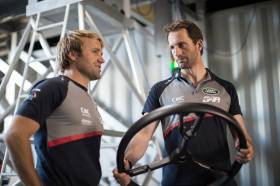Displaying items by tag: Downwind
Sir Ben Ainslie’s Top Tips For Downwind Starts
#HowToSail - Downwind or reaching starts can be a deceptively tricky proposition — but Sir Ben Ainslie has a few top tips for your strategy on the line.
The America’s Cup winning skipper and multi-time Olympic gold medallist shares his wisdom with Yachting World, starting with the best position at the start — which is more about the right angle for your boat than closeness to the first mark.
Assessing the rest of the fleet is also of key importance, as the behaviour of give classes will be predictable in certain conditions.
Most of all, clean air is king — and getting it can mean treating the race more like a game of chess, such as giving up position in the early stages to avoid a weather trap.
Yachting World has much more on Sir Ben’s downwind start tips HERE.
Deep Thinking on Laser SB3 downwind sailing
A period off the water has allowed class measurer and Dun Laoghair sailor Roger Bannon put together some detailed an interesting figures on sailing a Laser SB3 downwind. The analysis, originally posted on a Dublin Bay SB3 email list and reproduced here with Roger's permission, look at the benefits of soaking low versus going high on your VMG downwind in a Laser SB3.
The post has sparked quite a debate on the SB3 email list. You can join in HERE on our dedicated forum thread.
From experience it seems the critical speed thresholds for SB3s are at 4 knots, 6 knots and 15 knots.
It seems when it is windier, the jump in speed required to make it pay is quite high. This perhaps justifies luffing aggressively in windy conditions to get a really big speed increase but the benefit diminishes the faster the boat goes unless you are able to come down with the new apparent wind.
Basically once you are doing 15 Knots plus, 40 degrees off dead downwind, getting back down with the apparent wind, whilst maintaining the speed, appears more important than increasing speed. In other words luffing at 15 Knots will need you to increase the speed to 20 knots for less than 10 degrees of luff to make it pay. On the other hand if you can soak down 10 to 20 degrees whilst retaining the 15 knot speed, the VMG improves astronomically. Ben Duncan appears to adopt this strategy while the most of us are whooping it up miles above him.
The matrix also shows that unless you get fairly significant % increases in speed at lower speeds it definitely pays to soak rather than luff if you can retain your core speed. Luffing 10 to 20 degrees as you get closer to dead downwind does not seem to hurt that much but it very quickly gets progressively more demanding of a speed increase to make further luffing pay. In other words, when soaking do not be afraid to occassionally luff 10 to 20 degrees to keep up the speed but do not overdo it.
10 degrees sounds like a lot but the next time you are sailing downwind you will be surprised how small a steering movement is required to make a shift in direction of 10 degrees.
Food for thought!!!!
Can the good instinctive downwind sailors give us their view?
























